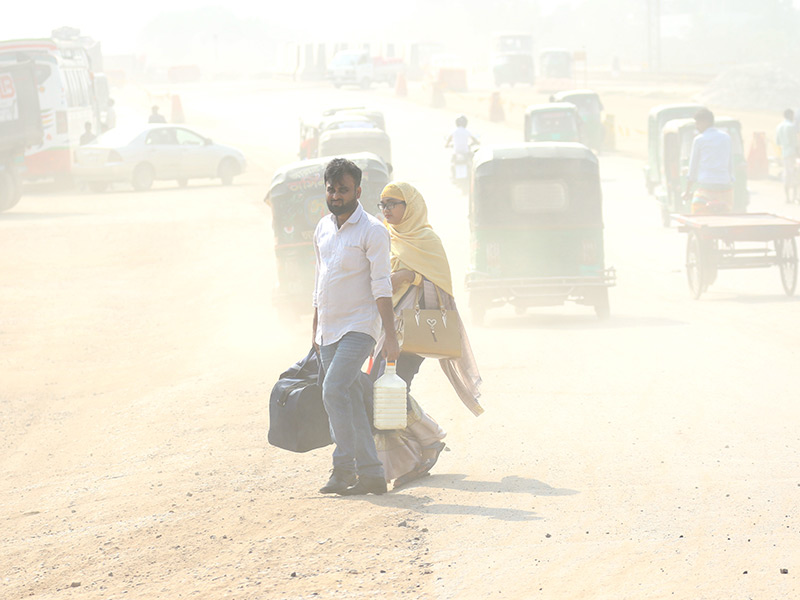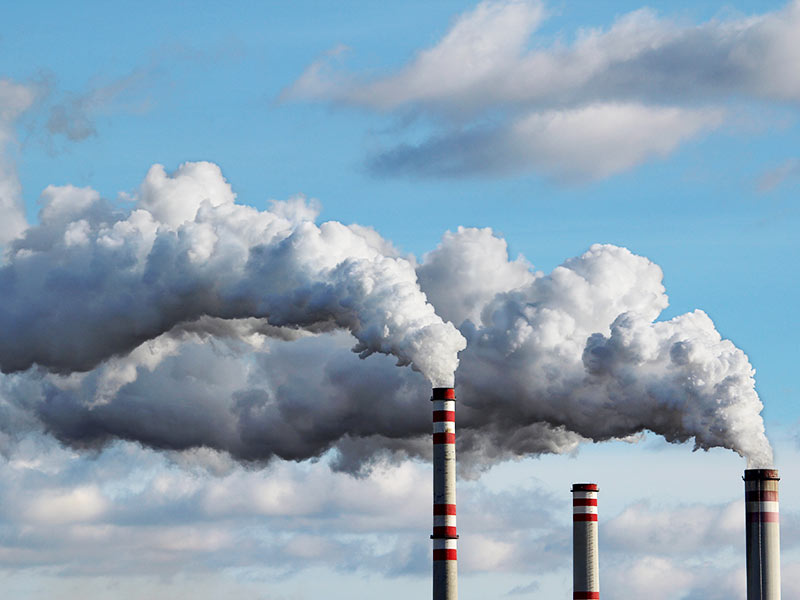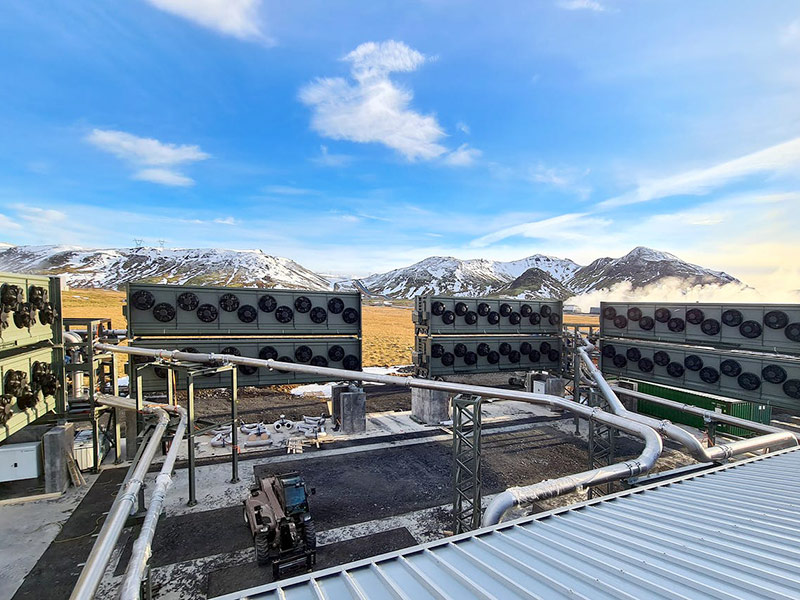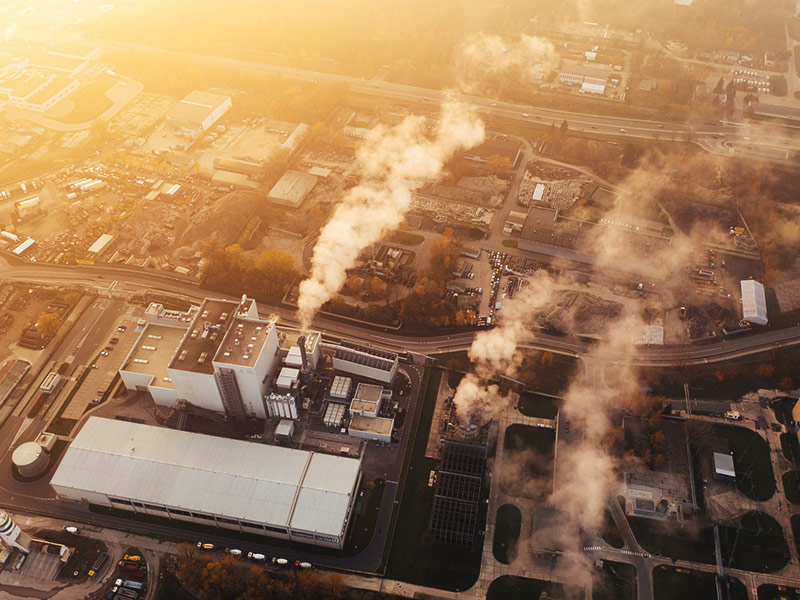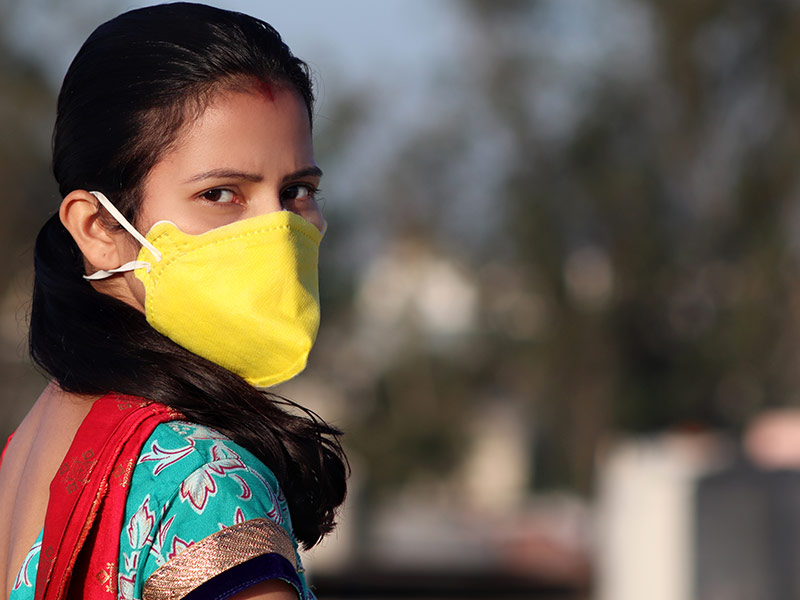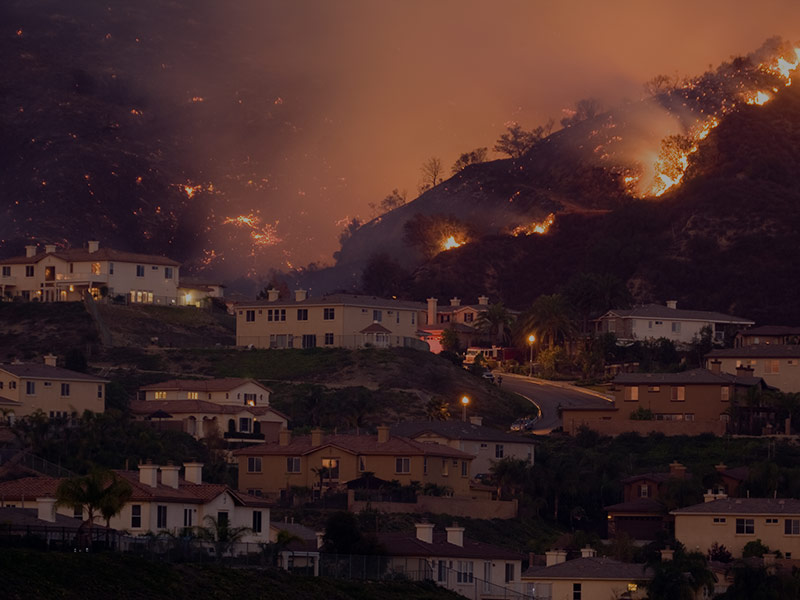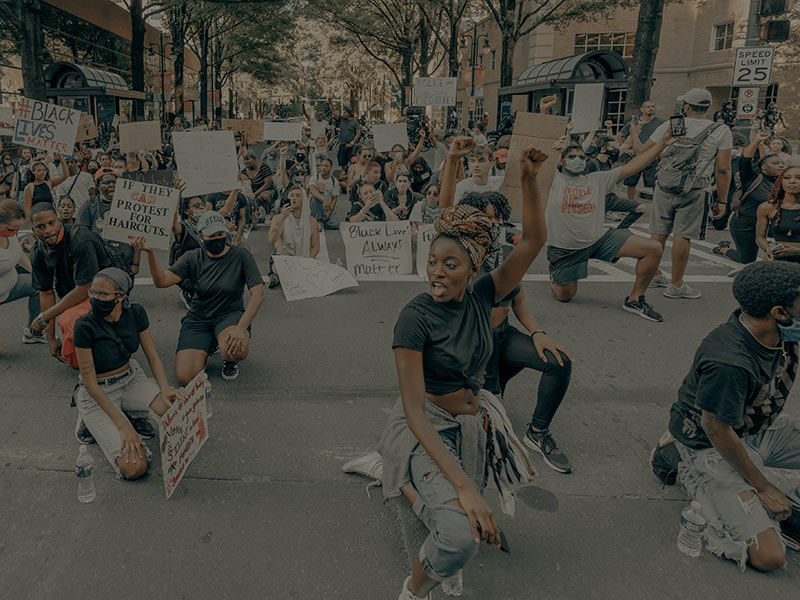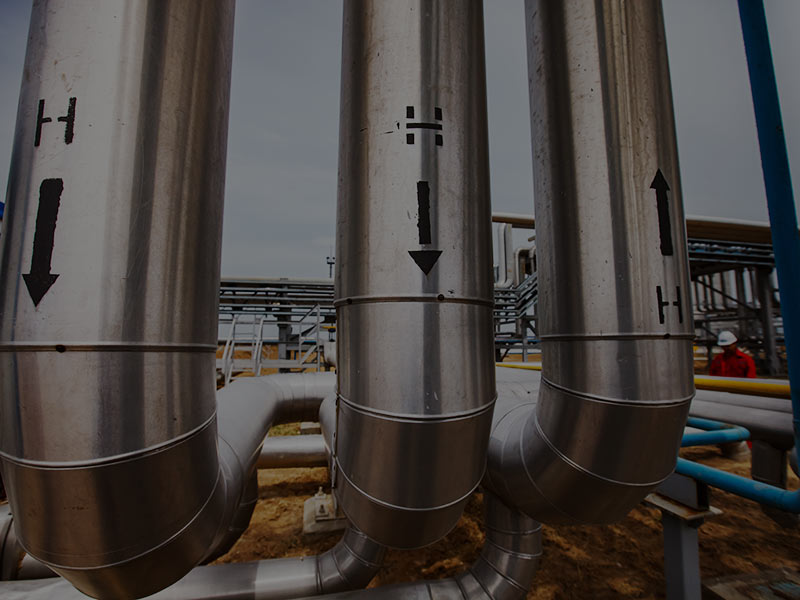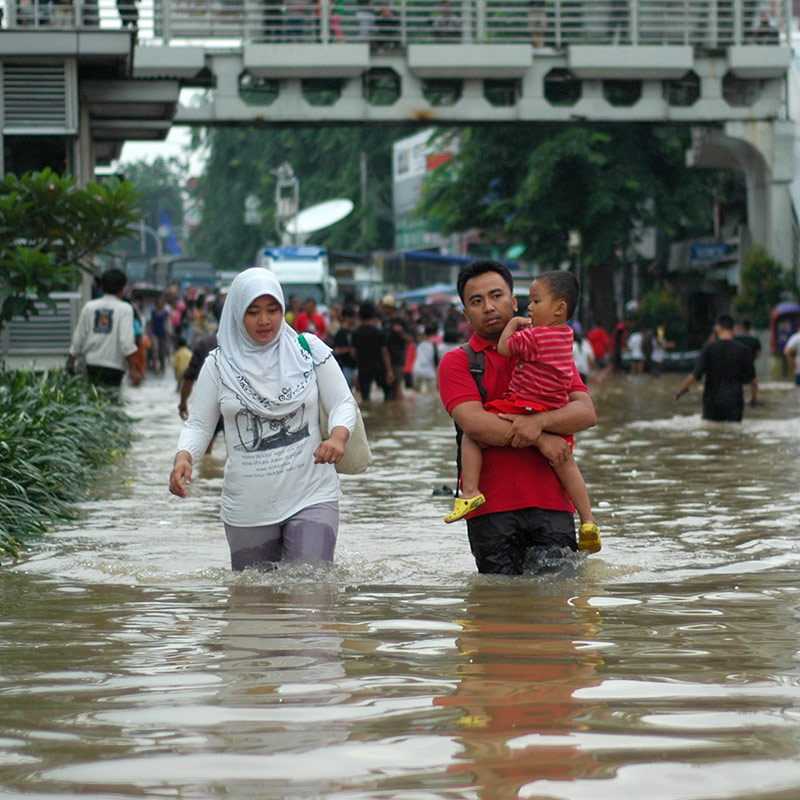
Climate change is both creating and exacerbating mental health problems. Civil society and young people in particular are demanding greater corporate action and accountability on both climate change and employee mental well-being. It’s no longer enough to consider the two challenges of climate and mental health in isolation: they need to be addressed in tandem to enable effective interventions and climate justice and to boost workplace well-being.
What’s New
Climate change is impacting the mental health of individuals around the world. However, the link between climate change and mental health is often overlooked. There is increasing and clear evidence of links between higher temperatures and suicides, distress following extreme weather events (e.g., PTSD following flood events), ongoing chronic impacts of worsening disease risk caused by environmental degradation, mental distress among young people, and health and social inequality. Researchers also find mental health problems in Asia are amplified by stresses associated with climate change.
This is only going to get worse as the impacts of climate change worsen. In 2021 alone, July saw the northern Canadian town of Lytton record the country’s highest ever temperature of 121.3°F/49.6°C, a staggering five degrees above the previous high. Three days later, the town burned to the ground. In August, Germany and Belgium saw record rainfall likely caused by human-made climate change; this “once-in-400-years” event was surpassed just one week later when even higher rainfall hit Zhengzhou, China.
The impact of climate change on mental health is threefold. First, there’s the immediate impact of extreme weather: water scarcity, property destruction in storms and sea surge, and hotter temperatures (e.g., increased suicide rates during high temperature spikes and flooding episodes). The second relates to those chronic impacts, such as loss of biodiversity and reduced agricultural productivity severely affecting livelihoods and driving the loss of homelands and cultures through migration. Then there’s climate anxiety, both from concern for what is happening to others elsewhere and fear of what is to come.
We are only beginning to fully understand the correlation between these phenomena. Mental health and heat appear to be interconnected. Heat stress directly caused by heat waves has been associated with mood disorders, anxiety, and related consequences. Hotter cities have even been found to be more violent than cooler cities. Temperature stress can directly affect bio-chemicals levels, altering the production of serotonin and dopamine. A 2021 report by the Climate Cares initiative found that cases of psychological trauma caused by climate-driven disasters exceed those of physical injury by a ratio of 40 to one.
Researchers anticipate that health impacts will worsen as climate change becomes acute, thanks to chronic failures of governments to act. Connor McLaughlin of One Mind at Work, a workplace mental health initiative, likens it to the pandemic’s long-term impact on mental health: “It showed the lag between cause and effect—the spike in mental health crisis happened well after the pandemic started. This lag will be even more significant for the impending threat of climate change as it is over a longer period.” As for COVID-19, women and people of color could be at particular risk of the mental health impacts of climate change due to factors such as frontline work, disproportionate burden of care, and lower access to support services. Similar factors play out in climate change: UN figures indicate that 80 percent of people displaced by climate change are women. There is a multiplying effect here too since health and climate crises are not only occurring simultaneously—climate change also makes further pandemics more likely. Warming temperatures increase the rate of transmission and range of vector- and waterborne diseases, while the root causes of climate change (such as deforestation) contribute to a rise in pandemics through habitat destruction.
Climate anxiety, meanwhile, is primarily “a fear about the future,” according to Paolo Raile, a psychotherapist and author of a book about the rise in eco-anxiety. This is particularly acute in young people. A global study has found young people are suffering “profound psychological distress” due to climate change and government inaction on the crisis. Nearly half of those aged 18-34 (47 percent) in the US say the stress they feel about climate change affects their daily lives.
Young people in the Global South express the most worry about the climate crisis, with 92 percent in the Philippines describing the future as “frightening.” This may even have a long-term effect: such stress during a crucial developmental period, coupled with an increased likelihood of the stress of climate change increasing throughout life, will conceivably (if not treated) increase the incidence of mental illness over a lifetime, say researchers in The Lancet.
Dr. Susan Clayton, a professor in psychology and environmental studies at The College of Wooster, Ohio, tells The Fast Forward that the data is consistent in indicating that young people are more affected: “They don’t know if they will have the standard model of marriage, families, careers because they don’t know what will be in the future.” This is leading to a growing trend for young people questioning whether or not to have children due to climate anxiety, which could exacerbate the global population slowdown. They also want to work for an employer that is “part of the solution, not part of the problem.”
Another related and often overlooked issue is “solastalgia.” Australian environmental researcher Glenn Albrecht coined the term to describe the distress people feel when their local environments and landscapes are transformed due to environmental degradation, wildfires, and droughts. Also known as “environmental grief,” this may be felt more by older people who have lived in a place for longer. The Indigenous Inuit people, for example, are experiencing rapid climate change that is impacting their traditional way of life; they have the highest suicide rate in the world.
Signals of Change
The 2020 bushfires saw the Australian Government invest AUD$76 million in immediate and long-term psychological support for those affected, including a Bushfire Recovery Access Program to provide ongoing free counseling to individuals, families, and emergency services workers traumatized by the bushfires. This included rebates for up to 10 psychological therapy sessions.
Environmental concern among Gen Z employees surged by 128 percent in 2020 alone, more than twice the 62 percent increase seen in their closest peers, the Millennials. Gen Z were also found to be the most concerned about well-being in the workplace, wanting their employer to share their values and act upon them. Across all age groups, employee concern about environmental impact increased by 52 percent globally.
If the planet continues to warm on its current trajectory, the average six-year-old will live through roughly three times as many climate disasters as their grandparents—twice as many wildfires, 1.7 times as many tropical cyclones, 3.4 times more river floods, 2.5 times more crop failures and 2.3 times as many droughts as someone born in 1960.
Fast Forward to 2025
As a child, I would have nightmares about being drowned by seawater as I slept...
The Fast
Forward
BSR Sustainable Futures Lab
Implications for Sustainable Business
Businesses need to consider the implications for workers across their value chains as well as for their direct employees. One Mind at Work’s McLaughlin advocates incorporating mental health into standard ESG metrics. For Eileen Gallagher, climate lead for BSR in Asia, a major question for companies is how they can identify populations at risk of climate-related mental health impacts across their value chains. Leadership could take the form of worker-centric projects that integrate preventative and remedial action on mental health. For instance, schemes might ensure that workers in manufacturing facilities or outdoors on farms and construction sites would have access to cooling stations, water, frequent breaks, and health monitors as well as access to mental health support through assistance programs available not only to direct employees but to other contractors.
An underappreciated risk is due to heat. Heat is associated with increased psychiatric disorders, as well as conflict, both actual violence and irritability. And heat also impairs labor productivity.
Alongside mental health impacts, a hotter world results in productivity losses. A study in Nature Climate Change estimates that environmental heat stress has already reduced global labor capacity to 90 percent in peak months over the past few decades and projects a reduction of 80 percent in peak months by 2050. Heat-related productivity losses in 2020 in the US were found to be steepest in outdoor sectors, such as agriculture and construction, but greatest overall in service sectors with limited air conditioning, from offices to transport and logistics. Employers will therefore increasingly need to consider changing working hours and conditions to better support workers during heatwaves.
Employers taking action to tackle climate change can turn into a virtuous circle: it would not only cut emissions but would also boost people’s mental well-being by giving them healthier lives and a sense of hopefulness and agency.
This is particularly important for attracting young talent. Research in The Lancet points out that there has never been such a large population of young people globally, and never have young people across the world faced a common challenge for mental health. Young people are future leaders and agents of change. Therefore, making investments to improve their mental health and wellbeing will provide dividends now and in the future: 75 percent of mental illness has been estimated to start before the age of 24.
Connor McLaughlin believes that employers who ignore these issues will be in trouble in ten years, whereas those that begin tackling them now will be at a distinct competitive advantage. Employers not doing enough to address climate change will increasingly struggle to recruit talent. On the flip side, an employer taking meaningful action on climate change will not only attract talent more easily, but their employees will also have improved mental health outcomes if they feel they are part of the climate solution. Agents of change, after all, require agency.
The climate charity Possible advise that employers multiply their impact on climate change by empowering their staff to take action and tying this in with employee rewards and benefits. This could take the form of a “Climate Perks scheme,” or rewarding staff who choose low-carbon transport such as trains, bike-to-work schemes. Offering staff time off to volunteer for organizations tackling the climate crisis is another way employers can show their commitment to climate action. During the 2019 Global Climate Strike, a series of employers, including Patagonia, Lush, Burton, and Sodastream, actually closed shops to give their staff the opportunity to join the strike.
Investing in green spaces and planting trees in and around workplaces can also diminish stress while also benefiting local biodiversity. Dr. Susan Clayton recommends that businesses incorporate “nature-based solutions,” such as gardens and green spaces at the workplace, to reduce stress, increase creativity, and improve air quality. Trees in particular have an important cooling effect: studies in the US have shown that shade from trees can reduce air conditioning costs by 20-30 percent, while the Environmental Protection Agency (EPA) states that evapotranspiration from trees combined with shading can help reduce peak summer temperatures by up to 9°F/5°C.
Best practice mental health support remains important, too. The primary emphasis must be to acknowledge mental health challenges and ensure that all employees—including those across the value chain—have access to support services. The World Health Organization (WHO) estimates that for every US$1 invested in treatment and support for mental health disorders like depression and anxiety, firms see returns of US$4 in improved health and productivity.
Gallagher highlights the importance of Employee Assistance Programs (EAPs) as a basic but essential form of mental health coverage that companies can offer, combined with a greater awareness of the support on offer (EAPs only work if they are communicated throughout the workplace). Therapists, however, say they feel ill-equipped to deal with climate anxiety. Responses to rising demand range from dismissal to guided meditations to cognitive behavioral therapy (CBT), which aims to help people gain more control over their thinking patterns and responses. While CBT is sometimes included in EAPs, Gallagher would also like to see mental health coverage in health insurance packages offer a higher level of access to professional care.
There is a rising expectation that employers cover mental health. The younger generation, in particular, is more open to express those needs and ask for support from their employers. Mental health coverage should be the expectation, not the exception.
One barrier is a shortage of mental health providers: in 2021, the US Health Resources and Services Administration identified a shortfall of nearly 6,500 mental health providers, affecting an estimated 124 million people. Not only is demand set to rise, but long hours and low pay are failing to attract more social workers, while over 60 percent of psychiatrists in the US are approaching retirement.
Beyond professional care, Dr. Clayton recommends discussion groups, run by businesses or in combination with community groups, to discuss climate issues, the action employers are taking, what can be done to prepare, and information on how to be resilient (both physically and mentally). Futures (or foresight) processes could be beneficial too: supporting people to explore the implications of future trends and scenarios can empower participants to identify the potential for strategic action today, thus shifting mindsets from passive anxiety about coming events to active intentions to enable transformative change.
![]()
Previous issue:
Central Banks Embrace Digital Currencies
![]()
Next issue:
Handing Power to the Bots




